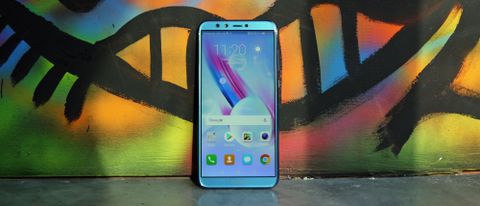Why you can trust TechRadar
Battery life
- 3,000mAh battery lasts a day in light usage
The 3000mAh battery in the Honor 9 Lite lasted around 7 hours on PC Mark battery test. While the PC Mark scores are impressive, the phone in casual usage lasts close to one day but struggles if used for more than basic tasks. Meaning, if you are a heavy user of social media apps, YouTube or games, the phone will require a charge much before the day ends.
Sadly, there is no support for fast charging, which is disappointing. Also, Honor should have gone with a USB Type-C port instead of microUSB for data syncing and charging.
Since, there's no fast charging supported on the phone, the 10W charger takes around 2 hours 25 minutes to charge from 0 to 100%.

It offers battery saving modes and resolution adjustment to boost the battery life. Those concerned for battery life have an alternate to save some juice when the phone is not in use.
If we look at the existing competitors of the Honor 9 Lite, both Redmi Note 4 and Mi A1 perform better in battery department.
Camera
- Dual camera setup: 16MP + 2MP
- Good performance in well-lit conditions
As mentioned, the USP of this phone is its quad-camera module. It has two cameras on the back and two on the front, both have a pair of 13MP primary sensor and 2MP sensor to capture depth. The key role of dual cameras on both sides is to capture portrait shots as expected.
Looking at how Honor is touting the camera on Honor 9 Lite, it competes directly with the current best-- Mi A1. We compared both the phones side by side, where the Mi A1 won the camera battle without a hitch.
The Honor 9 Lite can click some good pictures in daylight, but it was inconsistent. The Honor 9 Lite fails to produce true-to-source colors, and they often look under-saturated. But it still does a good job at reading the scene and adjusting light.
In artificial light, the Honor 9 Lite captures vibrant and punchy colors and reads with considerable amount of details. The only issue here is with the white balance, which the Honor 9 Lite often messes up.

Portrait shots in day light from the Honor 9 Lite look good, but it misjudges the edges in some photos. Also, when compared to the Mi A1, the burring effect on the Honor 9 Lite looks unnatural.
The autofocus speed in normal mode is snappy, while it slows down a little in portrait mode. Like most other budget phones, the Honor 9 Lite cannot be trusted in low-light, especially when the light source is far from the subject.
Front camera on this phone is the best among its competitors. The dual camera setup does a good job at producing punchy colours and tones. Selfies look attractive and it also has a bunch of modes to make you look good.
The Honor 9 Lite has clean and easy to use software. It offers a bunch of modes and settings that can be accessed simply by swiping left or right from the main screen. This has all the basic functions, enabling easy controls. But 40% of the screen is covered by black borders, which leaves limited space for the viewfinder.
You get the camera switching button, flash controls, wide-aperture mode and moving picture mode on top of the screen. Whereas, the gallery shortcut, shutter button and video switch is at the bottom.
It also has a Pro mode that lets you tweak settings like ISO, exposure, focus etc. There's a pro video mode, night shot, time-lapse, filters, watermark, light painting, panorama and more. It also has shortcuts for touch to capture, capture smiles and object tracking.
Camera samples








Current page: Battery life and camera
Prev Page Introduction, price and design Next Page What’s it like to use?Sudhanshu Singh have been working in tech journalism as a reporter, writer, editor, and reviewer for over 5 years. He has reviewed hundreds of products ranging across categories and have also written opinions, guides, feature articles, news, and analysis. Ditching the norm of armchair journalism in tech media, Sudhanshu dug deep into how emerging products and services affect actual users, and what marks they leave on our cultural landscape. His areas of expertise along with writing and editing include content strategy, daily operations, product and team management.

